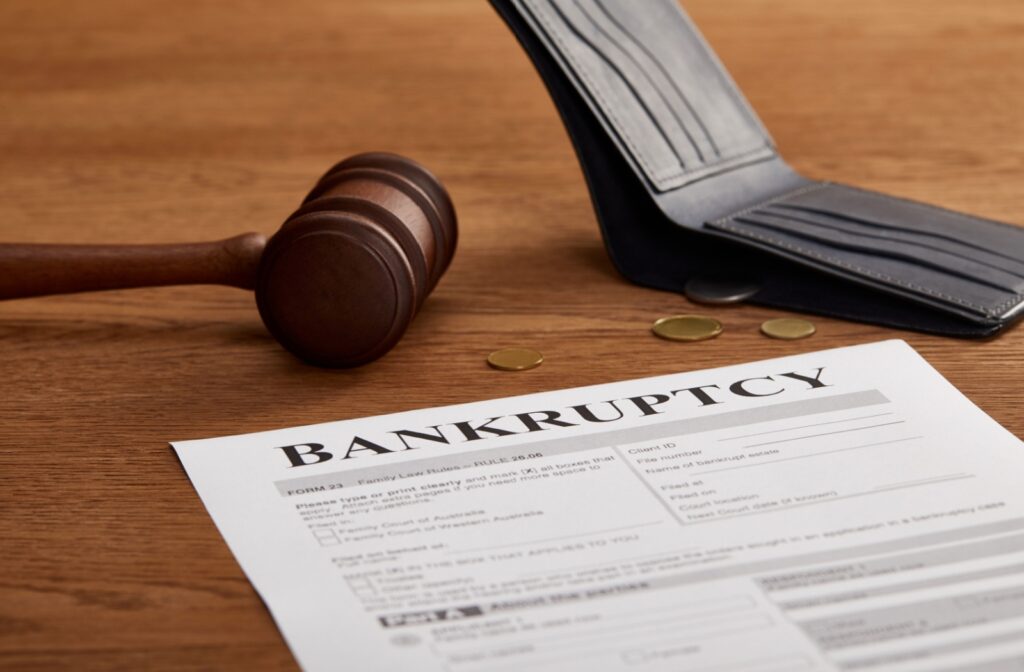Dealing with overwhelming financial responsibilities can be a significant cause of stress and hardship. When you have significant debt and do not know where to turn, you may have considered bankruptcy. This is the legal proceeding where most, or all, of a person’s debts are dissolved with the help of a Licensed Insolvency Trustee, allowing them a fresh financial start.
While bankruptcy offers several benefits, like the ability to begin anew without financial obligations, it does also have some drawbacks. Once bankruptcy is filed, secured lenders, including mortgages and auto finance companies, may commence or continue to enforce their security unless payments are made according to the terms.
What Is Bankruptcy?
While the Bankruptcy and Insolvency Act is a Federal statute some of its’ provisions vary from province to province.. However, the purpose of bankruptcy is to provide financial relief to an individual or business that is currently overwhelmed with debt.
There are three primary approaches to bankruptcy:
- Voluntary assignment, where you formally declare yourself to be bankrupt.
- Involuntary assignment, where one or more of your creditors file a petition to render you bankrupt.
- Deemed bankruptcy, where a person fails to get approval under Division I or Commercial Proposal of the Bankruptcy and Insolvency Act.
- The goal of bankruptcy is simple—it is designed to offer a solution when a person no longer has the resources to pay off their debts, or when a creditor refuses alternative solutions.
However, bankruptcy is not designed to be a totally free pass to a person with poor finances. It aims to offer the potential for a fresh start by removing most, or all, of a person’s existing debts. Once the bankruptcy has been filed, you still must pay any ongoing responsibilities, taxes, or other financial obligations.
When to Consider Bankruptcy
The decision to file for bankruptcy should not be undertaken lightly. It is only recommended in certain situations, such as:
- When your existing credit cards are maxed out and you are unable to make payments
- When your property is at risk of foreclosure
- Your creditors are commencing legal action to recover their losses
- Your income no longer covers your necessary bills and is unlikely to change
If you find yourself at risk of legal repercussions, such as wage garnishments or the seizure of your assets, bankruptcy may be the solution. However, it is important to note that bankruptcy does not act as an escape route from financial responsibilities; instead, it provides a legal measure to give you a second chance.
In Canada, you cannot file for bankruptcy yourself. Instead, you need to seek the help of a Licensed Insolvency Trustee (LIT) to begin the legal process. You must provide your LIT with any required information, such as a list of your existing assets. Then, your LIT manages your bankruptcy term. If it is your first bankruptcy, this takes around 9 months; if it is your second or more, this can take up to 2 years.
The Benefits of Bankruptcy
If you are considering bankruptcy as a solution for your financial concerns, your first step should be to get in touch with a debt care professional. They can sit down with you to discuss potential options like bankruptcy or other debt consolidations.
If they decide bankruptcy is an ideal choice for you, then they can discuss the benefits, such as:
- The legal protection from unsecured debt
- The halting of existing debt collection
- Temporary relief from ongoing accounts and debt load
This offers a way for you to reduce significant levels of stress; once bankruptcy has been filed for, your LIT will be able to negotiate the terms of your bankruptcy. Then, your unsecured debts will be removed. Your LIT will then likely provide you with financial advice for taking proper care of your future finances to help avoid similar situations.
The Cons of Bankruptcy
Though bankruptcy can be an ideal choice for those struggling under financial pressure, it does have some drawbacks that must be considered.
To begin, it is important to stress that bankruptcy is not designed to be a get-out-of-jail-free card. If you accrue any additional debts after the filing, you must continue paying them. Taxes, utilities, and new loans must be paid off per the terms of your agreements.
Other cons can include:
- A negative impact on your credit report that can last for years
- The seizure of assets for any non-dischargeable debts
- Several debts, like secured loans, are still enforceable
Alongside this, bankruptcy filings are considered to be public knowledge. This could potentially lead to social repercussions in your area.

Professional Financial Advice
If you are considering bankruptcy as a solution to your financial woes, reach out to our team at A.C. Waring & Associates. Our team of experts can help you find the right path forward—whether through bankruptcy or through another alternative. Don’t let financial worries trouble you any longer; contact our team today.





